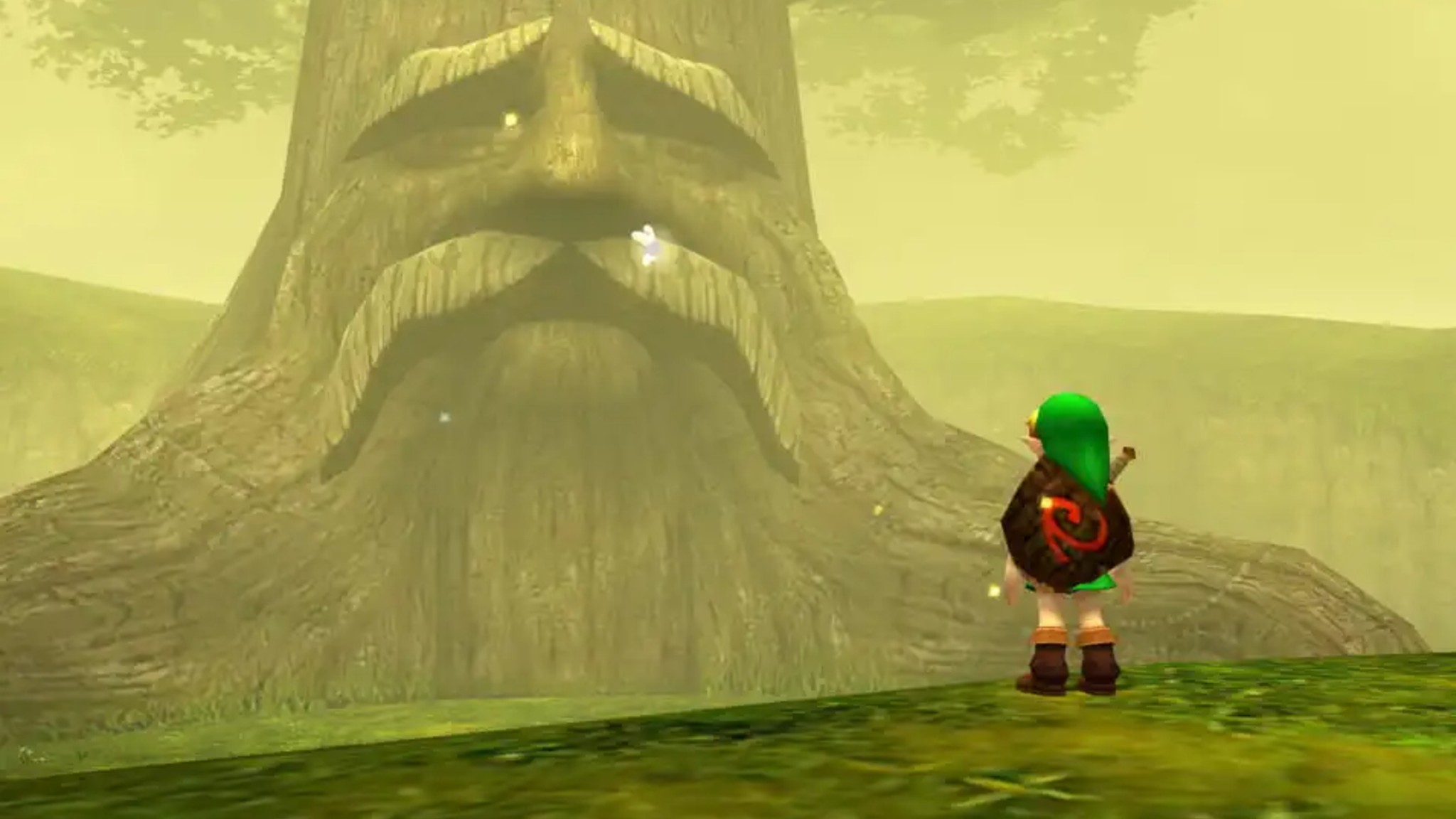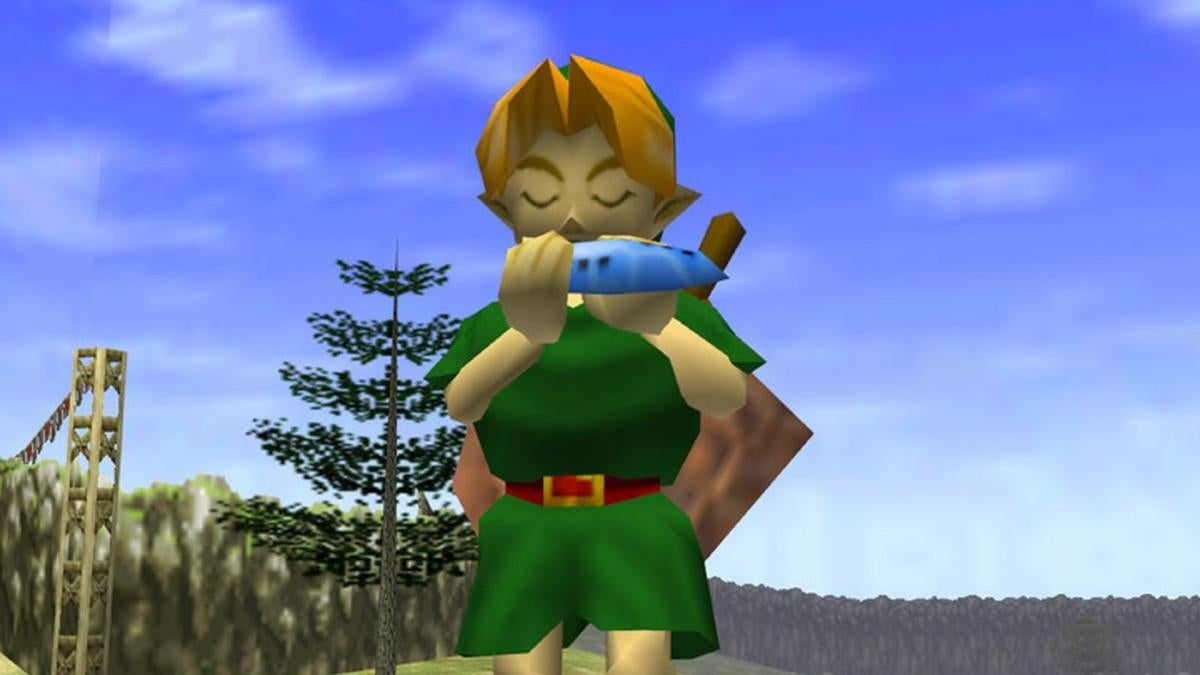
The games that leave the strongest impact on us are frequently built around themes of sorrow, and they instill within us a profound significance that, even if we don’t fully grasp the message, their values resonate with us emotionally. The reason these games stay with us often makes them among our all-time favorite games. Games like Zelda, especially Ocarina of Time, are deeply tragic and possess a Shakespearean level of sorrow. Remarkably, Ocarina of Time is frequently ranked as one of the greatest games ever made.
As a gamer, I can’t help but feel the weight of tragedy that envelopes “Zelda: Ocarina of Time.” It all starts with an invitation to visit the Great Deku Tree, who shares his fear of a curse spreading across the land. He entrusts me, Link, with the monumental task of preventing Ganondorf from gaining access to the sacred realm and restoring balance to Hyrule.
The journey is filled with responsibilities that seem to pile up on my young shoulders. From stopping Ganondorf, healing nature, to completing various quests, it’s a burden that a child should never bear. The themes in this game are heavy, but the loss of innocence and childhood freedom is what really tugs at my heartstrings.

As I bid farewell to my cherished friend, Saria, and ventured forth into Hyrule following the demise of the Great Deku Tree, I realized I was embarking on a journey far beyond my years. In that instant, I felt like a youth compelled to mature prematurely, stumbling away awkwardly from the heartache of losing a companion.
At the start of ‘Ocarina of Time’, a captivating innocence pervades as you delve into the unknown, gathering the sacred stones and venturing through Hyrule’s Temple of Time. This journey is richly rewarding, offering numerous opportunities to forge friendships – from clandestine meetings with Princess Zelda within her palace, to saving Princess Ruto by navigating Lord Jabu-Jabu’s depths. However, this enchanting sense of childlike wonder eventually fades… or so it seems.
Unbeknownst to Link and Zelda, Ganondorf couldn’t obtain the holy stones or enter the Temple of Time by himself, yet with Link carrying out all the tasks, Ganondorf was given the chance to enter the Temple of Time. Taking advantage of this situation, Ganondorf seized control over Hyrule, and the Sages imprisoned Link for seven years in a sleep that would break only when he demonstrated he was truly fit to become the Hero of Time. In this way, Link’s precious childhood years were abruptly taken from him before he could even enjoy them.

During those seven years, both the world and the people in Link’s life continued to progress. By the time he emerged from the Temple of Time, Hyrule had fallen into disarray, becoming Dark Hyrule. Similarly, nature has lost its equilibrium. Lake Hylia is dried up, Death Mountain experiences frequent explosive activity that shrouds the skies, and Kakariko Village is plagued by vengeful spectral entities. The world Link returned to was a world ravaged by time, seven years of life seemingly lost.
As Link returns to familiar places to awaken the seven Wise Ones, he discovers that several friends who took on the role of Sages inhabit a realm teetering on the edge of annihilation. Among them is Ruto, who once harbored dreams of a life where she and Link could be together and perhaps even marry. Regrettably, those innocent aspirations were forced to fade away.
As Link journeys through and purifies various temples, reviving several wise sages along the way, the world gradually recovers. However, this recovery comes with a price – opponents that were previously smaller and simpler to vanquish are now replaced by formidable foes such as Redeads or Wallmasters. Eventually, Link faces Ganondorf in an attempt to end his tyranny. This battle costs Link dearly, but eventually he manages to defeat Ganondorf, bringing peace back to Hyrule.

Completing the task of vanquishing Ganondorf and saving Hyrule doesn’t come free of charge. With the mission accomplished, the Hero of Time can reclaim his lost youth, but the experiences and deeds undertaken to save Hyrule continue to weigh on him. In this alternate reality, people are unaware of the sacrifices he made because Ganondorf’s actions have no bearing in this world. Those memories remain a personal burden for him. Additionally, upon completion of the quest, Link’s fairy companion, Navi, is no longer present. As a boy from Hyrule rather than a child of Kokiri Forest, Link cannot return to his childhood life in Kokiri Forest without Navi by his side.
In essence, if Link returns to Kokiri Forest without a fairy, his destiny becomes that of a Stalfos. This may have been the tragic outcome for the Hero of Time, hinted at in a later installment, “The Legend of Zelda: Twilight Princess.” It’s there where we learn that the heroic spirit our new protagonist encounters is from the same lineage as the younger hero, one who once saved Hyrule and bears a resemblance to a Stalfos. With unfulfilled friendships in Hyrule and no other options, despite the impending doom that awaited him upon returning to Kokiri Forest, Link opted to return home.
Read More
- Best Controller Settings for ARC Raiders
- Ashes of Creation Rogue Guide for Beginners
- Meet the cast of Mighty Nein: Every Critical Role character explained
- Bloober Team launches ‘Remosd Neul Serorehso Ovam Ceyerd’ countdown website
- Arc Raiders Guide – All Workbenches And How To Upgrade Them
- Avengers: Doomsday Finally Gives The X-Men What Fox Refused To
- 7 Fantasy Movies That Aged Incredibly Poorly
- Kit Keenan Slams Claim Mom Cynthia Rowley Helped Buy Her NYC Apartment
- 7 Best Animated Horror TV Shows
- Star Wars Has Never Shown the Empire’s Most Terrifying Tactic
2025-06-26 00:40